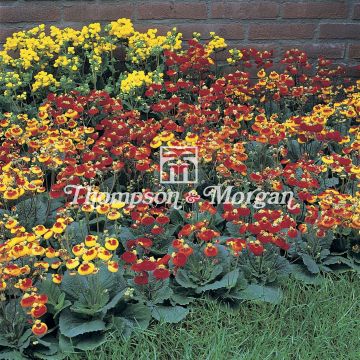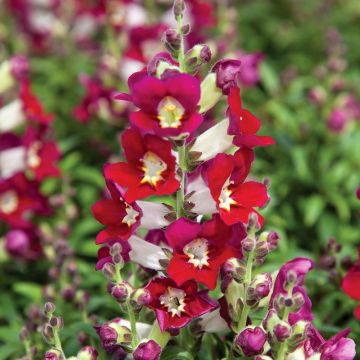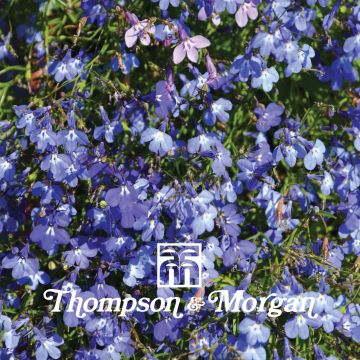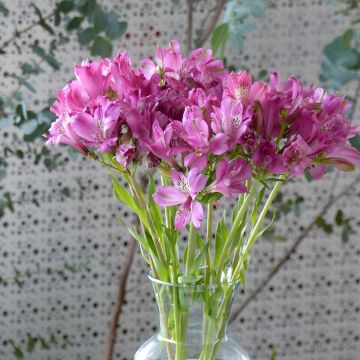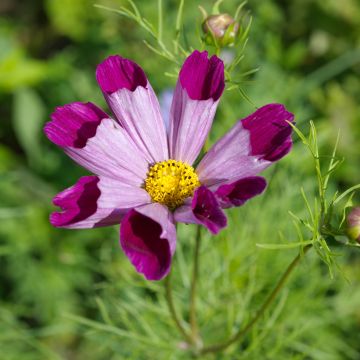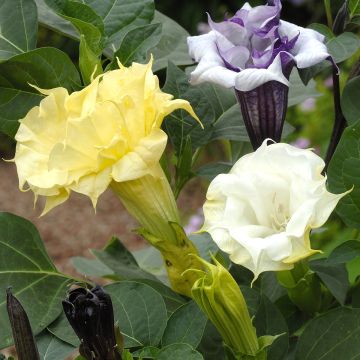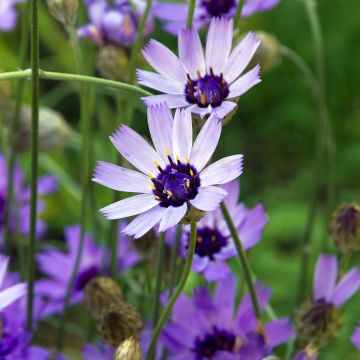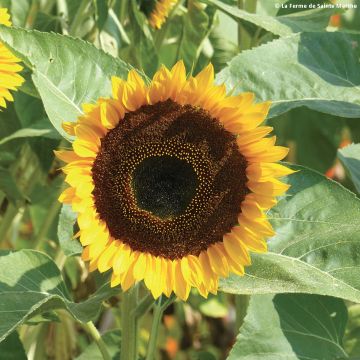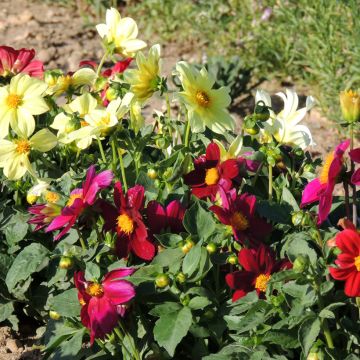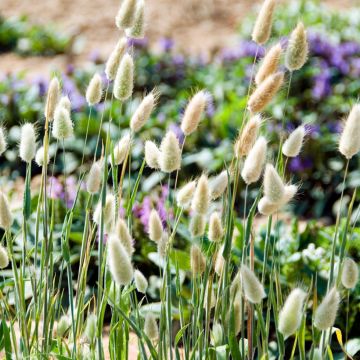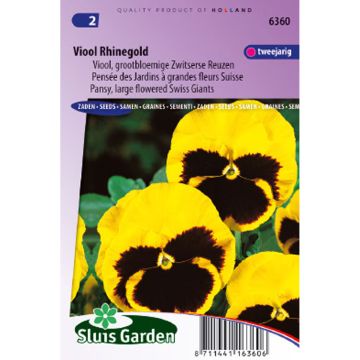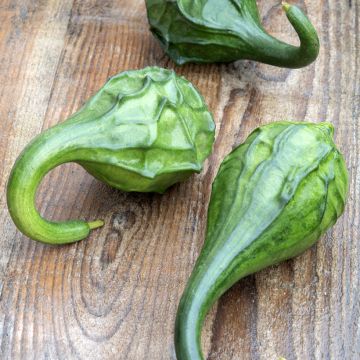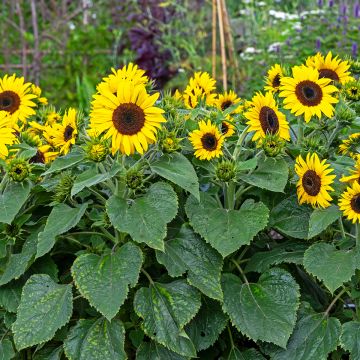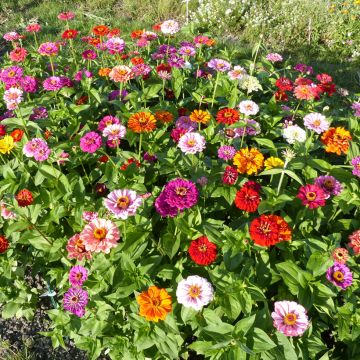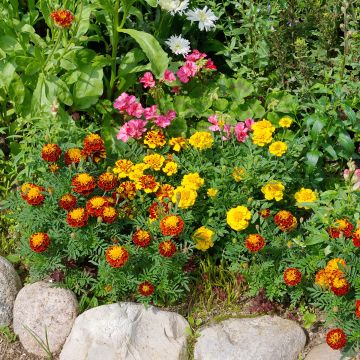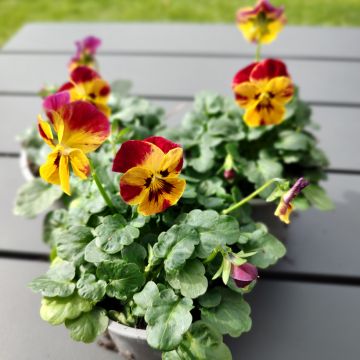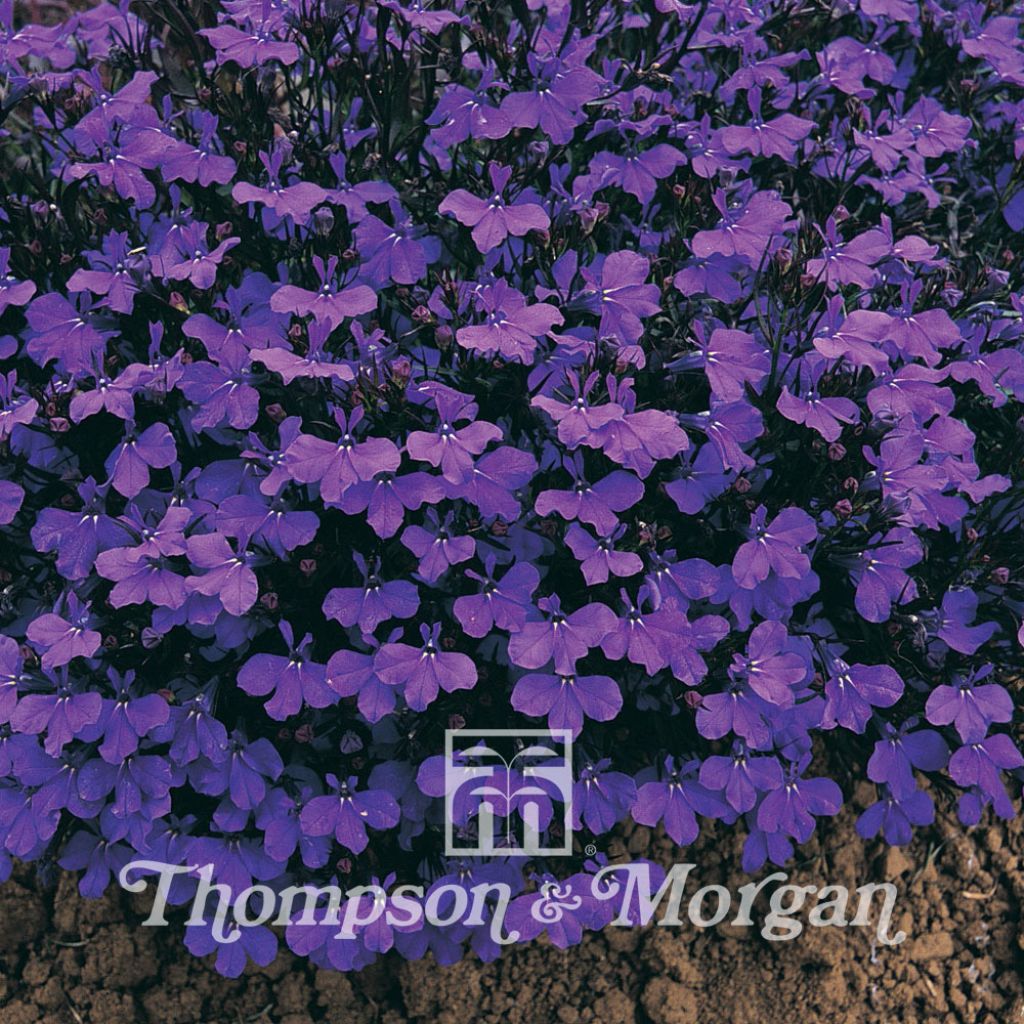

Lobelia erinus Crystal Palace Seeds
Lobelia erinus Crystal Palace Seeds
Lobelia erinus Crystal Palace
Trailing Lobelia
This item cannot be shipped to the selected country
Dispatch by letter from €3.90
More information
Schedule delivery date,
and select date in basket
This plant carries a 6 months recovery warranty
More information
We guarantee the quality of our plants for a full growing cycle, and will replace at our expense any plant that fails to recover under normal climatic and planting conditions.
Seed-only orders are dispatched by sealed envelope. The delivery charge for seed-only orders is €3.90.
Does this plant fit my garden?
Set up your Plantfit profile →
Description
The Lobelia erinus Crystal Palace, or Erine Lobelia, is a small compact annual herbaceous plant, essential for summer hanging baskets and pots. Its numerous flowers, with a very deep blue-violet color, resemble small butterflies and bloom continuously from June to September. They stand out against its olive-green foliage with a touch of bronze. Its habit, in the form of plump cushions, allows it to add volume to compositions.
Lobelia erinus is a must-have for container gardening. Its numerous thin and branching stems form a ball that fills hanging baskets all summer and fits in between taller summer plants. Its small alternate, obovate, and slightly crenate leaves create a background for the multitude of flowers that bloom all summer. Approximately 1 cm (0.4 in) long, the flowers are tubular at the base and then flare into three downward petals and two smaller upward ones, resembling insect antennae. They are regularly visited by pollinators.
Lobelia also finds its place as a standalone plant in pots, brightening up every corner of courtyards and terraces. You can even plant it at the edge of a flower bed, especially if you have a small garden, preferably in a sunny (not scorching) spot but also in partial shade. However, make sure not to let it dry out as it wouldn't appreciate it. It prefers moist but not waterlogged soil. Additionally, fertilizing it will give it even more vigor, and if your climate is suitable, it will easily flower until October.
The Crystal Palace variety has a dense and deep color. It can accentuate the pastel shades of its companion plants, such as Petunias, Diacias, and Nemesias. But it can also contrast dynamically with Bidens, Marigolds, or red Begonias. Don't hesitate to sow it in large quantities; you will always find a place for it.
Attention, seeds reserved for highly experienced gardeners who are used to sowing very fine seeds. These seeds are as fine as dust, barely visible to the naked eye.
Report an error about the product description
Flowering
Foliage
Plant habit
Botanical data
Lobelia
erinus
Crystal Palace
Lobeliaceae (Campanulaceae)
Trailing Lobelia
Cultivar or hybrid
Other Thompson and Morgan seeds
Planting and care
The Lobelia Crystal Palace is preferably sown under shelter in a tray from the month of March, as the seeds will prefer a temperature between 18 and 24°C.
To distribute the fine seeds of the Lobelia more easily, mix them with a little sand. Just cover the seeds with a very thin layer of substrate that you will keep slightly moist. Place them in the sun (essential) and if possible wrap the tray in transparent plastic film during the germination period. They will sprout between 14 and 21 days. As soon as they emerge, remove the protective film. When the seedlings are large enough to be moved, you can separate them and put them in buckets if the frost period is not over and keep them warm. Otherwise, you can arrange them in flower beds or pots. You can gradually acclimatize them if the nights are still cool by taking them out of their shelter during the day. Prefer a rich substrate, but not too waterlogged.
Make sure to water the Lobelias regularly, but avoid excess water.
Sowing period
Intended location
-
, onOrder confirmed
Reply from on Promesse de fleurs
Flower seeds
Haven't found what you were looking for?
Hardiness is the lowest winter temperature a plant can endure without suffering serious damage or even dying. However, hardiness is affected by location (a sheltered area, such as a patio), protection (winter cover) and soil type (hardiness is improved by well-drained soil).

Photo Sharing Terms & Conditions
In order to encourage gardeners to interact and share their experiences, Promesse de fleurs offers various media enabling content to be uploaded onto its Site - in particular via the ‘Photo sharing’ module.
The User agrees to refrain from:
- Posting any content that is illegal, prejudicial, insulting, racist, inciteful to hatred, revisionist, contrary to public decency, that infringes on privacy or on the privacy rights of third parties, in particular the publicity rights of persons and goods, intellectual property rights, or the right to privacy.
- Submitting content on behalf of a third party;
- Impersonate the identity of a third party and/or publish any personal information about a third party;
In general, the User undertakes to refrain from any unethical behaviour.
All Content (in particular text, comments, files, images, photos, videos, creative works, etc.), which may be subject to property or intellectual property rights, image or other private rights, shall remain the property of the User, subject to the limited rights granted by the terms of the licence granted by Promesse de fleurs as stated below. Users are at liberty to publish or not to publish such Content on the Site, notably via the ‘Photo Sharing’ facility, and accept that this Content shall be made public and freely accessible, notably on the Internet.
Users further acknowledge, undertake to have ,and guarantee that they hold all necessary rights and permissions to publish such material on the Site, in particular with regard to the legislation in force pertaining to any privacy, property, intellectual property, image, or contractual rights, or rights of any other nature. By publishing such Content on the Site, Users acknowledge accepting full liability as publishers of the Content within the meaning of the law, and grant Promesse de fleurs, free of charge, an inclusive, worldwide licence for the said Content for the entire duration of its publication, including all reproduction, representation, up/downloading, displaying, performing, transmission, and storage rights.
Users also grant permission for their name to be linked to the Content and accept that this link may not always be made available.
By engaging in posting material, Users consent to their Content becoming automatically accessible on the Internet, in particular on other sites and/or blogs and/or web pages of the Promesse de fleurs site, including in particular social pages and the Promesse de fleurs catalogue.
Users may secure the removal of entrusted content free of charge by issuing a simple request via our contact form.
The flowering period indicated on our website applies to countries and regions located in USDA zone 8 (France, the United Kingdom, Ireland, the Netherlands, etc.)
It will vary according to where you live:
- In zones 9 to 10 (Italy, Spain, Greece, etc.), flowering will occur about 2 to 4 weeks earlier.
- In zones 6 to 7 (Germany, Poland, Slovenia, and lower mountainous regions), flowering will be delayed by 2 to 3 weeks.
- In zone 5 (Central Europe, Scandinavia), blooming will be delayed by 3 to 5 weeks.
In temperate climates, pruning of spring-flowering shrubs (forsythia, spireas, etc.) should be done just after flowering.
Pruning of summer-flowering shrubs (Indian Lilac, Perovskia, etc.) can be done in winter or spring.
In cold regions as well as with frost-sensitive plants, avoid pruning too early when severe frosts may still occur.
The planting period indicated on our website applies to countries and regions located in USDA zone 8 (France, United Kingdom, Ireland, Netherlands).
It will vary according to where you live:
- In Mediterranean zones (Marseille, Madrid, Milan, etc.), autumn and winter are the best planting periods.
- In continental zones (Strasbourg, Munich, Vienna, etc.), delay planting by 2 to 3 weeks in spring and bring it forward by 2 to 4 weeks in autumn.
- In mountainous regions (the Alps, Pyrenees, Carpathians, etc.), it is best to plant in late spring (May-June) or late summer (August-September).
The harvesting period indicated on our website applies to countries and regions in USDA zone 8 (France, England, Ireland, the Netherlands).
In colder areas (Scandinavia, Poland, Austria...) fruit and vegetable harvests are likely to be delayed by 3-4 weeks.
In warmer areas (Italy, Spain, Greece, etc.), harvesting will probably take place earlier, depending on weather conditions.
The sowing periods indicated on our website apply to countries and regions within USDA Zone 8 (France, UK, Ireland, Netherlands).
In colder areas (Scandinavia, Poland, Austria...), delay any outdoor sowing by 3-4 weeks, or sow under glass.
In warmer climes (Italy, Spain, Greece, etc.), bring outdoor sowing forward by a few weeks.

































